Reliance Transfer Switches are reliable‚ high-quality devices for seamless power switching between generators and main grids. Trusted for over 40 years‚ they ensure uninterrupted power supply with advanced Loadside technology‚ making them a top choice for professionals and homeowners alike.
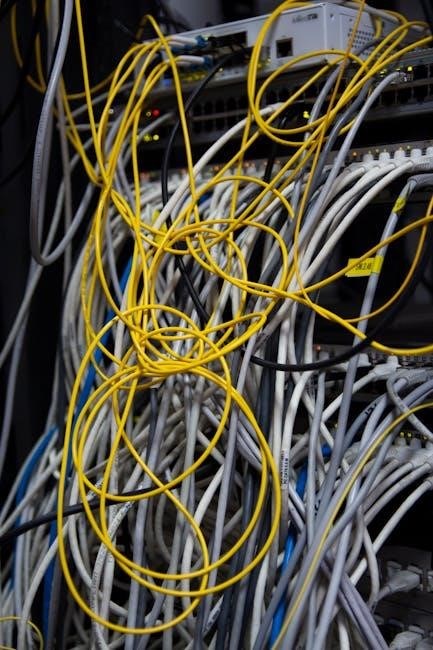
1.1 Overview of Transfer Switches
A transfer switch is an essential electrical device designed to safely switch power sources between a main grid and a backup generator. It ensures uninterrupted power supply during outages by automatically or manually transferring loads. Transfer switches are categorized into manual and automatic types‚ with manual switches requiring physical operation‚ while automatic switches activate without user intervention. These devices are crucial for residential‚ commercial‚ and industrial applications‚ providing reliable power management. They prevent backfeeding‚ which safeguards utility workers and equipment. Transfer switches are available in various configurations‚ including circuit-specific models‚ allowing homeowners to prioritize essential appliances. Their primary function is to maintain electrical continuity‚ making them indispensable for generator setups. Proper installation and configuration ensure safe and efficient operation.
1.2 Importance of Manual Transfer Switches
Manual transfer switches are vital for ensuring safe and controlled power transitions during outages. They provide a physical means to switch between the main grid and a generator‚ eliminating the risk of backfeeding‚ which can damage equipment or harm utility workers. These switches are cost-effective and simple to install‚ making them a preferred choice for homeowners and professionals. By allowing users to prioritize essential circuits‚ manual transfer switches help manage power distribution efficiently. They also offer a high level of safety‚ as they require intentional activation‚ reducing accidental power transitions. With their durability and ease of use‚ manual transfer switches are an essential component in generator setups‚ ensuring reliable power management during emergencies. Their importance lies in their ability to provide a secure and straightforward solution for power switching needs.
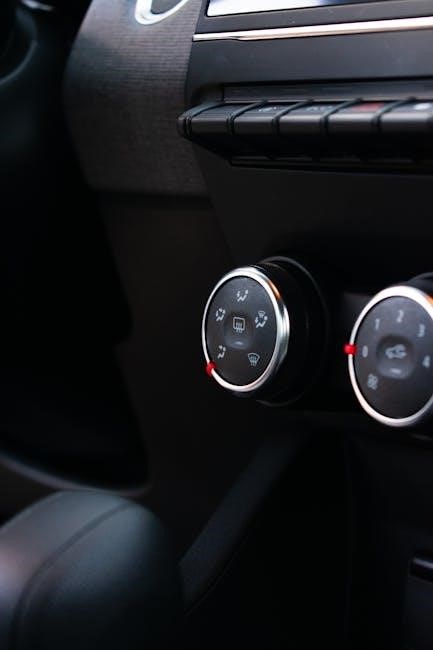
Key Features of Reliance Transfer Switches
Reliance Transfer Switches feature advanced Loadside technology‚ compatibility with various generators‚ and UL 1008 and C-UL listings‚ ensuring safe and reliable power management for households and businesses.
2.1 Loadside Transfer Switch Technology
Loadside transfer switch technology is a cornerstone of Reliance Transfer Switches‚ enabling seamless power switching between a generator and the main electrical grid. This advanced system ensures that the transfer process is smooth and safe‚ minimizing the risk of electrical surges or interruptions. The Loadside design allows for efficient management of power distribution‚ making it a preferred choice for both residential and commercial applications. With UL 1008 and C-UL listings‚ these switches meet rigorous safety standards‚ providing reliability and durability. The technology is engineered to handle high electrical loads while maintaining consistent performance‚ ensuring that critical circuits remain operational during power outages. Additionally‚ Reliance switches are designed with non-interlocking contacts‚ simplifying installation and reducing the potential for mechanical failures. This robust technology‚ combined with a 5-year limited warranty‚ underscores Reliance’s commitment to delivering high-quality‚ dependable solutions for power management needs.
2.2 Compatibility with Various Generators
Reliance Transfer Switches are designed to work seamlessly with a wide range of generators‚ ensuring versatility for different power needs. They are compatible with generators from leading brands like Generac and others‚ offering a universal solution for homeowners and businesses. The switches support various power levels‚ from smaller residential generators to larger commercial units‚ making them adaptable to diverse applications. Their universal design allows for easy integration with most generator models‚ while maintaining safety and performance. This compatibility ensures that users can rely on consistent power delivery‚ regardless of the generator they choose. With Reliance‚ you can trust that your transfer switch will work efficiently with your generator‚ providing a reliable backup power solution.
2.3 UL 1008 and C-UL Listings
Reliance Transfer Switches are UL 1008 and C-UL listed‚ ensuring they meet rigorous safety and performance standards. These listings verify that the switches have undergone extensive testing for reliability and compliance with North American electrical codes. UL 1008 certification specifically addresses transfer switches for use in emergency systems‚ while C-UL listing ensures compliance with Canadian safety standards; These recognitions provide assurance that Reliance products are designed to operate safely and efficiently under various conditions; By adhering to these standards‚ Reliance Transfer Switches offer users peace of mind‚ knowing their equipment meets the highest industry benchmarks for quality and reliability.

Pre-Installation Checks
Before installation‚ always verify circuit requirements and load capacity to ensure compatibility. Check generator specifications and local electrical codes for compliance with safety standards.
3.1 Understanding Circuit Requirements
Understanding circuit requirements is crucial for safe and effective installation of the Reliance Transfer Switch. Begin by identifying the power needs of your home‚ prioritizing essential circuits like lighting‚ refrigeration‚ and heating. Ensure the transfer switch model matches your generator’s capacity and the total load of selected circuits. Verify the amp ratings of circuit breakers to avoid overloading‚ as most switches support 15- or 20-amp breakers‚ except for specific high-capacity positions. Balance the load evenly across the transfer switch to prevent strain on the generator. Always reference the user manual for specific wiring guidelines and safety precautions. Proper planning ensures reliable power distribution and compliance with electrical codes.
3;2 Determining the Right Transfer Switch Model
To determine the right Reliance Transfer Switch model‚ start by assessing your power needs. List essential circuits and their wattage requirements. Match the transfer switch to your generator’s capacity‚ ensuring it meets or exceeds the total load. Consider the number of circuits needed; a 6-circuit model allows control of six appliances. Balance high-power appliances across different legs to prevent overloading. Check for UL 1008 and C-UL listings for safety compliance. Avoid using the switch for high-power appliances like water heaters. Calculate total load by summing appliance wattage‚ including starting watts for devices like refrigerators. Refer to the manual for specific guidelines and diagrams. This step-by-step approach ensures selection of a model that safely meets your needs and complies with safety standards.

Installation of the Reliance Transfer Switch
Mount the transfer switch near your load center‚ ensuring proper alignment. Connect the neutral and ground wires securely. Wire the switch to the load center carefully‚ following the manual’s instructions for a safe and correct installation.
4.1 Mounting the Transfer Switch
Proper mounting of the Reliance Transfer Switch is essential for safe and efficient operation. Begin by selecting a suitable location near your load center‚ ensuring easy access and visibility. Position the transfer switch so that its bottom center aligns with the knockout on your load center‚ using the included 16-inch conduit for connection. Secure the switch firmly to the wall or surface‚ following the manufacturer’s instructions to avoid any movement or vibration during operation. Use the provided mounting hardware to ensure a stable installation. Make sure the transfer switch is installed in a well-ventilated area‚ away from direct moisture or extreme temperatures. Proper alignment and secure mounting are critical to prevent electrical issues and ensure reliable performance. Always refer to the manual for specific mounting guidelines tailored to your model.
4.2 Wiring the Transfer Switch to the Load Center
Wiring the Reliance Transfer Switch to your load center requires careful planning and precision. Begin by connecting the neutral and ground wires from the transfer switch to the corresponding terminals in the load center. Ensure all connections are secure and tightened properly to avoid loose wires‚ which can cause electrical issues. Use the appropriate gauge of wire recommended by the manufacturer to connect the transfer switch to the load center. Route the wires through the provided conduit to protect them from damage and ensure a clean installation. Double-check the wiring configuration to match the circuit requirements specified in the manual. Proper wiring ensures safe and efficient power transfer between the generator and your home’s electrical system. Always refer to the manual for specific wiring diagrams and instructions tailored to your model.
4.3 Connecting the Neutral and Ground Wires
Connecting the neutral and ground wires is a critical step in installing the Reliance Transfer Switch. Identify the neutral wire‚ typically white‚ and the ground wire‚ usually green or bare‚ from the transfer switch. These wires must be connected to the corresponding neutral and ground terminals in the load center. Ensure the connections are secure and properly tightened to avoid any loose contacts. The neutral wire carries the unbalanced current‚ while the ground wire provides a safe path for fault currents. Always follow the wiring diagram in the manual to confirm the correct terminals. Use the recommended wire gauge to maintain safe and efficient electrical flow. Double-check that all connections are tightened firmly to prevent potential hazards. Never switch the neutral or ground wires‚ as they must remain continuously connected to ensure proper system operation and safety;
4.4 Balancing Electrical Load
Balancing the electrical load is essential for efficient and safe operation of the Reliance Transfer Switch. Distribute high-power appliances evenly across the available circuits to prevent overloading. For example‚ on a 6-circuit transfer switch‚ connect the refrigerator to one switch and the furnace to another to ensure balanced usage. Avoid concentrating heavy loads on a single circuit‚ as this can cause tripping or damage. Always consider the total power requirements of connected devices and ensure they do not exceed the generator’s capacity. Use the circuit breakers to monitor and control the load distribution. Proper balancing ensures smooth power delivery and prevents potential hazards. Refer to the wiring diagram in the manual for guidance on optimal load distribution based on your specific setup and generator size.
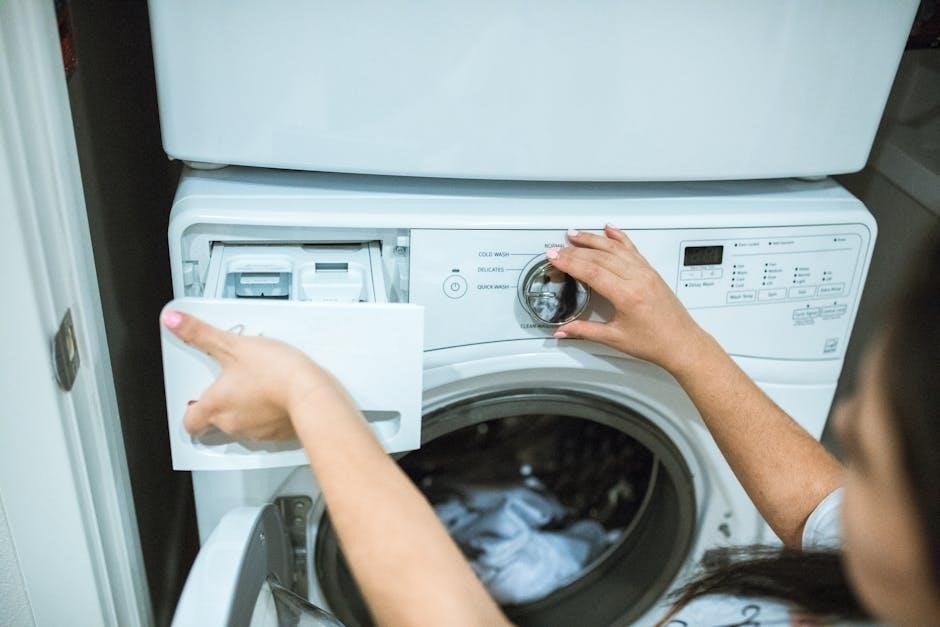
Circuit Management
Effective circuit management ensures optimal power distribution and safety. Prioritize critical circuits‚ configure breakers‚ and organize loads to maintain reliable and efficient energy delivery during generator operation.
5.1 Prioritizing Critical Circuits
Prioritizing critical circuits is essential for ensuring reliable power delivery during generator operation. Start by identifying essential systems like lighting‚ HVAC‚ and refrigerators‚ which require uninterrupted power. These circuits should be connected to the transfer switch first to ensure they remain operational. Distribute high-priority loads evenly across the switch to avoid overloading any single circuit. For example‚ assign heavy-duty appliances like furnaces and water heaters to higher-amp circuits to maintain balance. Always refer to the manufacturer’s guidelines to determine the appropriate circuit assignments. Proper prioritization prevents overload risks and ensures safety and efficiency. This step is crucial for maintaining power continuity and protecting sensitive equipment during emergencies.
5.2 Configuring Circuit Breakers
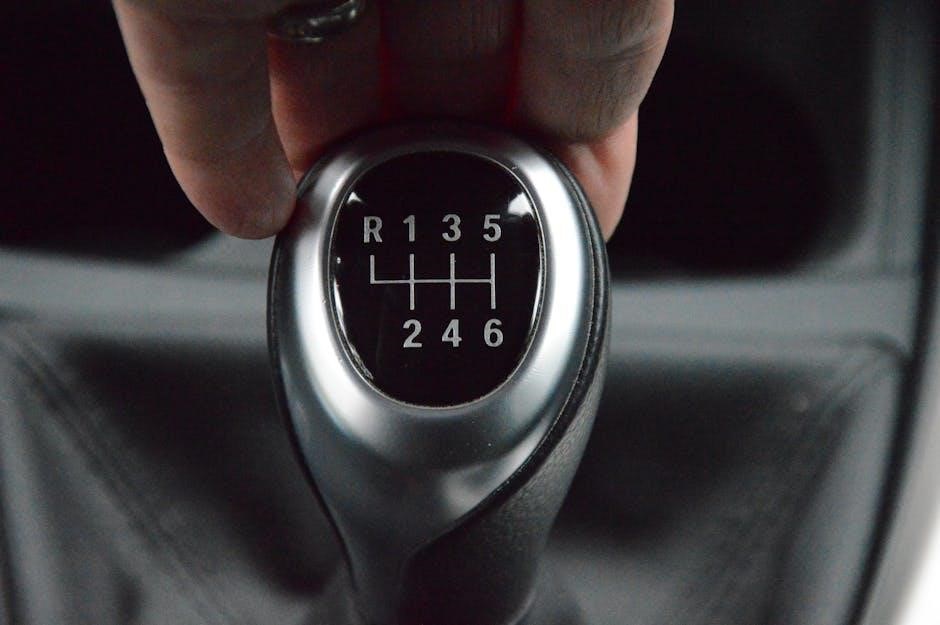
Configuring circuit breakers correctly ensures safe and efficient power distribution through the transfer switch. Use 15- or 20-amp circuit breakers for most applications‚ as they align with typical household needs. Avoid installing transfer switch circuits on branches exceeding 20 amps‚ except for positions A and B‚ which may support up to 30 amps. Wire the most critical circuits first‚ starting with Switch A‚ to prioritize essential loads. Always follow the manufacturer’s guidelines for breaker sizing and placement. The transfer switch is UL 1008 listed‚ ensuring compliance with safety standards. Proper breaker configuration prevents overloads and safeguards equipment. Double-check all connections to ensure they are secure and meet local electrical codes. This step is vital for maintaining system reliability and user safety during generator operation.
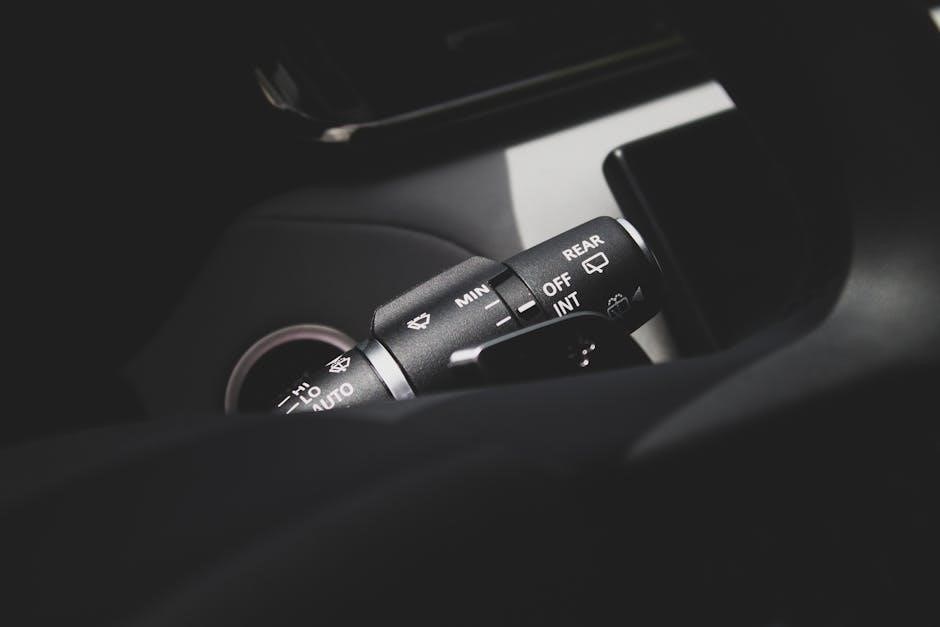
Safety Guidelines
Always follow safety guidelines to prevent hazards. Avoid improper wiring practices and ensure proper grounding. Keep transfer switches away from water and flammable materials. Use as specified.
6.1 Avoiding Improper Wiring Practices
To ensure safe and reliable operation‚ avoid improper wiring practices when installing a Reliance transfer switch. Always follow the manufacturer’s instructions and local electrical codes. Never bend or force wires beyond their capacity‚ as this can damage the conductor or insulation. Avoid running generator power cords through doors or windows‚ as this can create fire hazards or electrical risks. Instead‚ use a weather-tight power inlet box to safely connect the generator to the transfer switch. Properly ground the system to prevent shocks or equipment damage. Ensure all connections are secure and tightly fastened to avoid loose wires‚ which can cause arcing or overheating. Never overload circuits‚ and always prioritize critical loads to maintain balanced power distribution. Improper wiring can lead to system malfunctions‚ fire hazards‚ or electrical shocks‚ so adherence to safety guidelines is crucial.
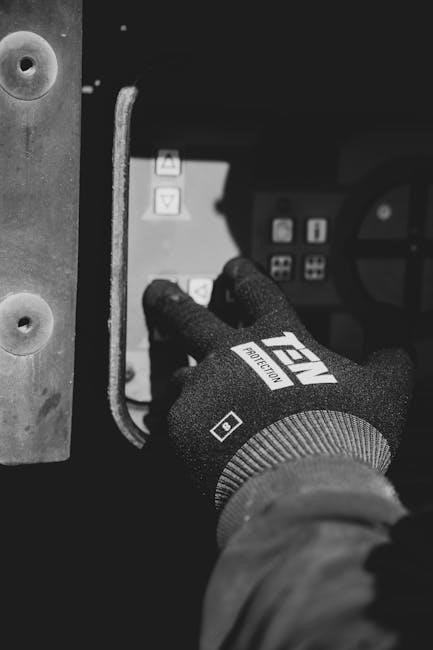
Troubleshooting Common Issues
Common issues with Reliance transfer switches include circuit breaker tripping and generator incompatibility. Check circuit loads‚ ensure proper generator sizing‚ and verify wiring connections for faults. Always refer to the manual for specific troubleshooting steps to resolve malfunctions effectively and safely.
7.1 Diagnosing Transfer Switch Malfunction
Start by identifying symptoms like failure to switch power or tripped circuit breakers. Check if the transfer switch is properly mounted and wired to the load center. Ensure the generator is sized correctly for the connected circuits and that all connections are secure. Verify that neutral and ground wires are correctly linked to avoid electrical imbalances. If circuits are overloaded‚ redistribute the load to prevent tripping. Refer to the manual for specific diagnostic steps‚ such as testing individual circuit breakers or checking for worn-out contacts. Always turn off the generator and disconnect power before inspecting internal components. Regular maintenance‚ like cleaning connections‚ can prevent malfunctions. If issues persist‚ consult a licensed electrician to ensure safe and effective repairs.
7.2 Resolving Circuit Breaker Tripping
Circuit breaker tripping in a Reliance transfer switch system often indicates an overload or improper wiring. First‚ verify that the generator’s power output matches the connected load. Check individual circuit ratings to ensure they are not exceeded. Redistribute the load by switching non-essential circuits to the alternate power source. Ensure all wiring connections to the transfer switch and load center are secure and correctly sized. If tripping persists‚ inspect for short circuits or ground faults in the wiring. Consult the manual for specific circuit breaker configurations and ratings. Always turn off the generator before performing any inspections or repairs. If issues remain unresolved‚ contact a licensed electrician to ensure safe and proper resolution.

Maintenance Tips
Regular inspection of connections and components ensures reliable performance. Clean any dust or debris and verify proper function. Schedule annual professional checks for optimal safety and efficiency.
8.1 Regular Inspection of Connections
Regular inspection of connections is crucial for ensuring the reliability and safety of your Reliance Transfer Switch. Start by examining all wires and terminals for signs of wear‚ corrosion‚ or loose connections. Verify that all screws and clamps are securely tightened to maintain proper conductivity. Check the neutral and ground wires to ensure they are correctly bonded and not damaged. Inspect the circuit breakers for any visible damage or tripping issues. Clean any dust or debris that may accumulate on the switch or surrounding areas. Test the transfer switch periodically to confirm smooth operation between generator and utility power. Schedule annual professional inspections to identify and address potential issues before they escalate. Always refer to the manual for specific guidelines and safety precautions during inspections.
9.1 Summary of Key Considerations
When working with Reliance Transfer Switches‚ it is essential to prioritize proper installation‚ circuit management‚ and regular maintenance to ensure optimal performance. Always follow the manufacturer’s guidelines for wiring and load balancing to prevent overloading. The UL 1008 and C-UL listings guarantee safety and reliability‚ making these switches a dependable choice for power distribution. Prioritize critical circuits during setup to maintain essential power during outages. Regular inspections of connections and circuit breakers are crucial for long-term functionality. Additionally‚ avoid improper wiring practices to prevent hazards. By adhering to these considerations‚ users can ensure a seamless and secure power switching experience‚ whether for residential or professional applications.
